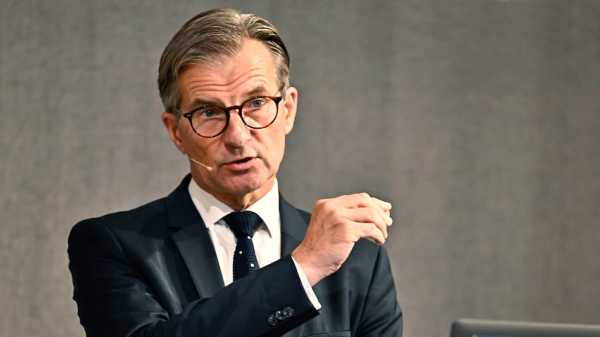
STOCKHOLM — Sweden’s central bank raised its key interest rate Thursday, saying that “inflationary pressures in the Swedish economy are still too high,” although there were signs that inflation had begun to fall.
The Riksbank raised its policy rate by a quarter of a percentage point to 4% and said its forecast indicated that it could be raised further.
”Inflation is also falling in Sweden. The rate of increase in energy and food prices has slowed significantly, which is positive,” the Riksbank said in a statement.
But the bank added that “inflation pressures are still too high,” noting that service prices are still rising rapidly and Sweden's currency, the krona, is “unjustifiably weak.”
The Swedish currency has plunged to its lowest level ever against the euro and the U.S. dollar. Sweden has been struggling with high inflation — it was 7.5% in August, down from 9.3% in July, but far from the 2% target set by Sweden’s central bank.
"To ensure that inflation continues downwards and stabilizes around the target within a reasonable period of time, monetary policy needs to be tightened further,” the bank said.
Thursday's interest rate increase meant that the policy rate is at the highest level since October 2008, the Swedish news agency TT wrote.
Central banks worldwide have been hiking borrowing costs to fight inflation sparked by the rebound from the COVID-19 pandemic and then Russia's war in Ukraine, which pushed up food and energy prices.
Norway's central bank also raised its policy rate by a quarter-point on Thursday, to 4.25%. Norges Bank Gov. Ida Wolden Bache said there “likely” will be an additional hike and “most probably in December.”
Inflation in Norway — which hit 4.8% in August — is above the central bank's 2% target.
“Persistently high inflation imposes substantial costs on society,” Norges Bank said, adding that ”a somewhat higher interest rate is needed to bring inflation down to target within a reasonable horizon.”
The moves came on a busy day of central bank action. Both the Bank of England and Swiss National Bank opted to kept rates steady.
A day earlier, the U.S. Federal Reserve left its benchmark interest rate unchanged for the second time in its past three meetings, a sign that it’s moderating its fight against inflation as price pressures have eased.
Sourse: abcnews.go.com






